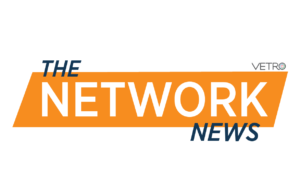VETRO FiberMap is proud to be included in Broadband Communities (BBC) Magazine’s list of the Top 100 FTTH companies for the third year in a row. BBC is a respected industry voice, and a convener of municipalities and other community broadband stakeholders striving to build a fiber connected world. We’re excited to continue to work alongside this organization and participate in their events. Their efforts are part of an overall groundswell of new broadband activity in communities, spurred by collaboration, new owner-operator models, and increased political support for broadband funding.
Taking Matters into Community Hands
Local governments around the world are struggling to connect their citizens to affordable, reliable broadband, and connectivity is essential to community growth and economic development, no matter how small the population. Rural towns and edge cities are especially disconnected, because larger, incumbent providers naturally prefer to build networks in more profitable, densely populated regions. Simply put, it’s expensive to deploy a fiber network, and there are fewer potential subscribers in rural areas. According to the Federal Communications Commission’s (FCC) Eighth Broadband Progress Report, nearly one-quarter of Americans in rural areas lack internet access, as does nearly one-third of the population in tribal areas. It is also widely agreed that the data used to reach these metrics includes a structural over-count of coverage, such that the real coverage gap is likely much larger.
As a result, municipalities are often faced with a difficult decision: continue with existing incumbent broadband providers and hope they will upgrade networks, enter into partnerships with third-party engineering firms and Internet Service Providers (ISPs) to build a private fiber networks with public support, or create a public municipal broadband utility, either alone or with other communities, to create a municipally owned telecom infrastructure asset. The discussions around this decision are leading to increasingly positive and creative outcomes, narrowing the digital divide faster than ever.
“Communities and towns are stepping up to the plate and saying, ‘we’re going to take matters into our own hands, and take a run at some sort of public-private partnership,’” says Will Mitchell, VETRO FiberMap CEO and Co-Founder. “We’ve got this new ability to create broadband utility districts. There’s a spirit of cooperation, which includes sharing of technical expertise, and a whole lot of can-do, roll-up-your-sleeves kind of activity going on to build broadband.”
Getting Creative
Today, municipalities and cooperatives have access to an incredible range of technology, equipment, and network information. Combined with lower regulatory hurdles, these resources have enabled partnerships like the open-access model to gain traction. It’s a new way of doing things, and it may not work for every community, but the open-access model allows the municipality to build and own the fiber network for purposes such as fire and life safety, economic development, resiliency, traffic management, autonomous vehicles, etc. The municipality then contracts with a private entity to operate the network, and leases the network to ISPs to compete for business and residential internet service customers.
There are several creative financial models meant to help fund these municipal broadband projects, including federal programs, state broadband incentives, hybrid municipal bonding options, interested private capital, and even foundation grants. State regulatory restrictions are relaxing, which has helped ignite over 800 municipal broadband and electrical cooperative fiber projects across the United States.
However, the FCC, USDA and other funders deploy broadband subsidies based on a broadband availability map, and the accuracy of this map relies on coverage data provided by internet service providers (ISPs). The methodology behind this provider stated coverage is structurally flawed, and historically the FCC has done a lackluster job independently verifying the data. On top of that, the FCC declares a region “served” if even a single location in a census block has or could have access to broadband. This policy immediately overestimates true coverage across the United States, and ignores the necessity of measuring broadband speed.
Overcoming the Obstacles
So how do we fix the map to make it easier for communities to receive funding for broadband projects? By beginning to measure coverage at a more granular, address-level data, something the industry has resisted for years. But before that change can happen, politicians need to get on the same page about the current state of broadband coverage, and commit to executing a plan to close the digital divide. Luckily, politicians—from elected officials to presidential candidates—have recently begun to include connectivity in their legislative and campaign platforms, respectively.
In the meantime, municipalities, broadband utilities, and cooperatives continue to operate full steam ahead, taking matters into their own hands. “The relationships are there, the ideas are there, and hopefully the funding is on its way,” says Sean Myers, VETRO FiberMap COO and Co-Founder. “There’s a really robust, collaborative broadband ecosystem developing around the United States, and we’re excited to be a part of it.”
Partnering and Tech – In Good Company
The BBC Top 100 list is a refreshing mix of contributors and VETRO FiberMap is honored to be in such good company. This is recognition of an entire ecosystem of software companies, engineering firms, ISPs, electric co-ops, equipment vendors and others, all contributing to broadband expansion. We’re fortunate to have developed partnerships in this space with municipal fiber project advocates, as well as complementary technology and software vendors.
Some of the BBC selection criteria mentions key software to support network design and build, including “innovative technologies with game-changing potential,” and “providing key conditions for fiber builds, such as early-stage support or demand aggregation.” With our focus on fiber management as a business-enabling platform, including a broad and unique suite of data creation, collection, and integration workflows, we’re pleased to deliver across all of these vectors.
Is your community considering fiber broadband? We highly recommend this comprehensive toolkit from Next Century Cities and Neighborly, outlining the financing options, mapping tools, and regulatory barriers to consider before your community can truly be “broadband ready.”


